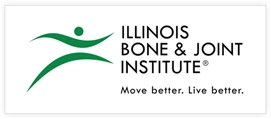Autograft vs. Allograft
What’s the difference between an Autograft and Allograft for ACL reconstruction surgery?
There are two primary options for reconstruction of the ACL – an autograft or an allograft. What’s the difference between the two?
An autograft uses a tendon (from you) taken from the patellar tendon, hamstring tendon, or quadriceps tendon. In the past, the patellar tendon was considered the “gold standard”, but all three options are effective and provide their own advantages. Using an autograft in reconstruction has several benefits for the patient. There is earlier incorporation into the body with an autograft because the tendon is from your own body. Additionally, there is no potential for outside disease transmission or rejection of the tendon. An autograft is also stronger than an allograft because of the sterilization process for donor tissue. An autograft is typically the recommended graft for patients younger than 40, but exceptions do exist.
If you choose to use an autograft, there are several options for the replacement tissue. Tissue may be taken from the patellar tendon, hamstring tendon, or quadriceps tendon.
- Autograft Patellar Tendon – This was previously the most common procedure performed for ACL reconstruction. It involves removing 10-11mm from the middle of your patellar tendon with bone blocks on either side. 5-10% may have soreness in the front of the knee from where the graft was taken when kneeling; this kneeling discomfort may persist indefinitely.
- Autograft Hamstring Tendons – This uses your distal hamstring tendons to reconstruct the ACL. The overall results have been similar to the patellar tendon. There has been some donor site weakness reported, though the clinical/functional significance has not been proven.
- Autograft Quadriceps Tendon – This technique utilizes taking a 10mm strip of your quadriceps tendon that inserts on the top of your patella. This graft typically does not require taking any bone from your patella and helps prevent kneeling pain. The graft has become more popular in recent years and has good short-term data.
There are many factors to consider when discussing which option is best for an autograft. For example, is this the first ACL tear? Are you an athlete? Are you a female athlete that relies heavily on your quadriceps? Is the goal to return to sports or simply to regain normal function of the knee? Every patient is different and considering the individual, their goals, and their unique circumstances will help determine the best autograft option.
An allograft uses a tendon taken from a donor (cadaver) to remake the ligament. Because the tendon comes from an outside source, there is no additional incision for the patient or risk of injury at the harvest site. Typically, using an allograft means an easier and smoother recovery for the patient in the first few weeks, however, total recovery time is the same as using autograft. Using an allograft means shorter surgical time as well. Allografts are a great option for patients over 40 who aren’t returning to high-level sports or for those with multiple knee injuries or revisions needed to repair the knee.
Every patient is unique and every knee is different. Your injury, the degree of knee instability, and your future goals all affect the surgical procedure and recommendation for which graft you choose. There are benefits to each option, and each individual should receive personalized care for their specific situation.
Ronak Patel, MD is a Board-Certified Orthopaedic Surgeon specializing in Sports Medicine injuries for teens and adults in Chicagoland and NW Indiana. Dr. Ronak M. Patel has performed hundreds of successful ACL reconstructions allowing a quicker rehabilitation, earlier weight-bearing and often doesn’t require bracing after ACL reconstruction. Dr. Patel has devised an efficient rehabilitation program to allow athletes of all levels (high school, collegiate, and professional) get back to competing at the highest level.
At a Glance
Ronak M. Patel M.D.
- Double Board-Certified, Fellowship-Trained Orthopaedic Surgeon
- Past Team Physician to the Cavaliers (NBA), Browns (NFL) and Guardians (MLB)
- Published over 49 publications and 10 book chapters
- Learn more

